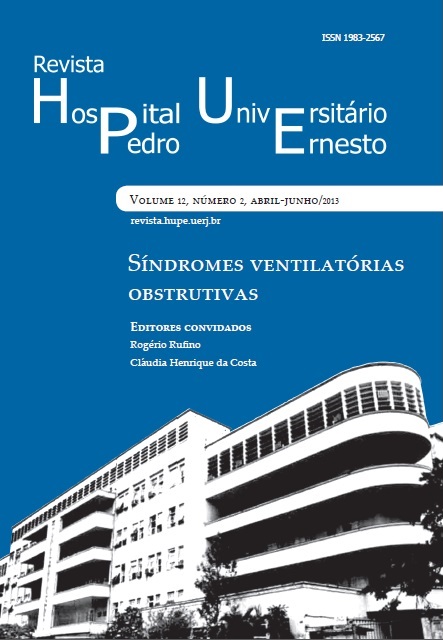The pathogenesis of chronic obstructive pulmonary disease
DOI:
https://doi.org/10.12957/rhupe.2013.8495Abstract
Chronic obstructive pulmonary disease (COPD) is a slowly progressive condition characterized by airflow limitation, which is largely irreversible. Cigarette smoking is the main etiologic factor in this condition, far outweighing any other risk factors. The pathogenesis of COPD therefore is strongly linked to the effects of cigarette smoke on the lungs. The extent of smoking history and the severity of airflow limitation are generally related, but with huge individual variation. The pathogenesis of COPD encompasses a number of injurious processes, including an abnormal inflammatory response in the lungs to inhaled particles and gases. Other processes, such as failure to resolve inflammation, abnormal cell repair, apoptosis, abnormal cellular maintenance programs, extracellular matrix destruction (protease/antiprotease imbalance), and oxidative stress (oxidant/antioxidant imbalance) have also a role. The subsequent chronic inflammatory responses lead to mucus hypersecretion, airway remodeling, and alveolar destruction. This article provides an update on the cellular and molecular mechanisms of these processes in the pathogenesis. COPD is an inflammatory disease with active participation of macrophages, neutrophils, and CD8 lymphocytes, associated to oxidant stimulus which directly injures lung structure. These biochemistry reactions progressively develop alterations in small airways and take a new model of non‑reversible pulmonary structural. Substances liberated by recruited cells and by oxidants stress brought temporary imbalance of pulmonary defense mechanism. This long time imbalance is one of the tools to up to date pathophysiology. The authors describe the relationship among structure, cells and biochemistry in COPD and its patho-physiological consequences.Downloads
Published
2013-06-30
Issue
Section
Artigos


